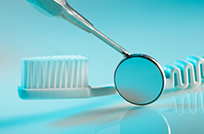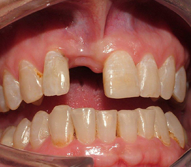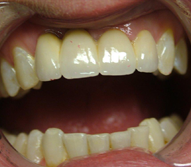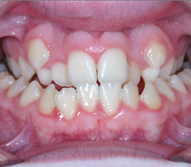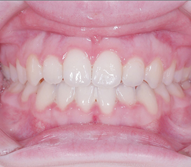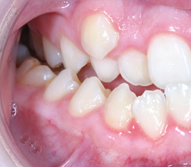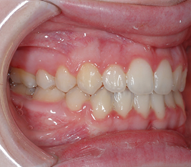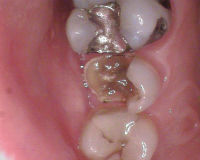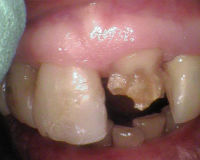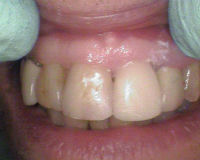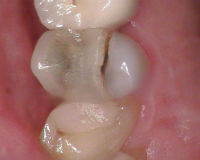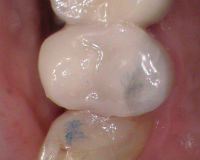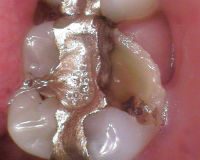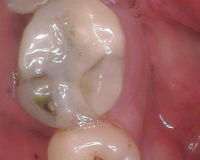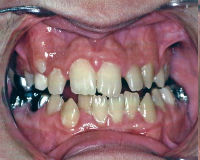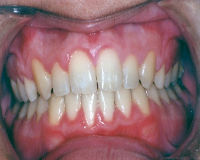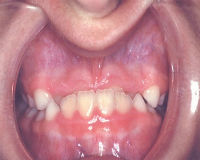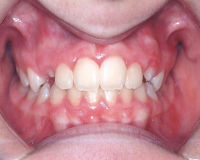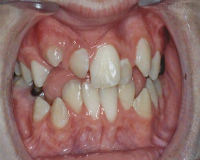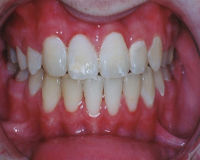What is Gingivitis and How Do I Prevent it?
Red, swollen gums, that bleed easily are not just a discomfort but are the first sign of gum disease (see 'What is Gum Disease'), called gingivitis. If it is left untreated it can become a more severe infection known as periodontitis. This inflammation of the gums begin with bacterial growth in the mouth and can eventually lead to tooth loss. Even if you don’t symptoms, you can still have a mild form of gingivitis. Find out what you need to know about having healthier teeth and stronger gums when it comes to your oral hygiene.
What causes gingivitis?
One of the contributing factors of gingivitis is plaque build up. Bacteria and mucus, as well as other particles, creates a sticky colourless deposit that forms on the teeth. This plaque build up causes the gums to be inflamed and bleed during your daily brushing routine.
Other factors that can contribute to gingivitis include:
- Hormones - A change in hormones can cause the gums to become more sensitive, which raises the risk of inflammation. This may occur during puberty, the menstrual cycle, pregnancy and/or menopause.
- Smoking - Those who smoke regularly are at a higher risk of developing gingivitis than those who are non-smokers.
- Diseases - Many diseases including, cancer, diabetes, and HIV are at a higher risk for gingivitis.
- Medication - Some drugs like anticonvulsants and anti-angina medications can affect oral health, and may cause abnormal growth of gum tissue.
- Family History - A person’s family history can share insight into a higher risk for gingivitis or periodontal disease.
What are the symptoms of gingivitis?
If you are experiencing the following symptoms, book an appointment with us to determine if you have gingivitis.
- Inflammation of the gums
- Red or swollen gums
- Gums that bleed easily
- Halitosis (bad breath)
What happens if gingivitis is not treated?
If gingivitis is left untreated the the inflammation can advance from the gums to the tooth, and becomes periodontitis. This serious gum infection damages the bone as the infection invades the support structures of the tooth. The periodontal ligament and bone around the tooth is slowly destroyed. As you lose bone, soft tissue pockets around each tooth get deeper and provide larger areas for bacteria and debris to collect, thus furthering the infection. As more bone and tissues breakdown, the tooth has little foundation left to hold it in place and eventually becomes loose, falls out, or needs to be extracted.
How do I to treat gingivitis
Once a gingivitis diagnosis has been made, the soft deposits (plaque) and the hard deposits (tartar build up) need to be removed to start the healing process. Soft deposits can be removed with a brush, floss, or professional polishing, but hard tartar deposits must be scaled off by a hygienist or dentist. In most cases this can be done quite painlessly. For those with particularly sensitive teeth or gums, topical gels or a local anaesthetic can be used.
How to prevent gingivitis
Proper oral hygiene is an effective way of preventing gingivitis and gum disease. Here is what can be done to ensure healthy teeth and gums.
- Brush your teeth regularly with a fluoride toothpaste
- Floss regularly to remove hidden plaque from between teeth
- Regularly rinse your mouth with an antiseptic mouthwash
- Use an electric toothbrush, as they do a better job at removing plaque than a manual one
- Visit the dentist every six months for a check-up and a professional cleaning
Talk to your 404 dental professional today if you have any concerns. We are dedicated to your oral health and well-being. If you have any questions or comments, please contact us by clicking the button below!


